Introduction
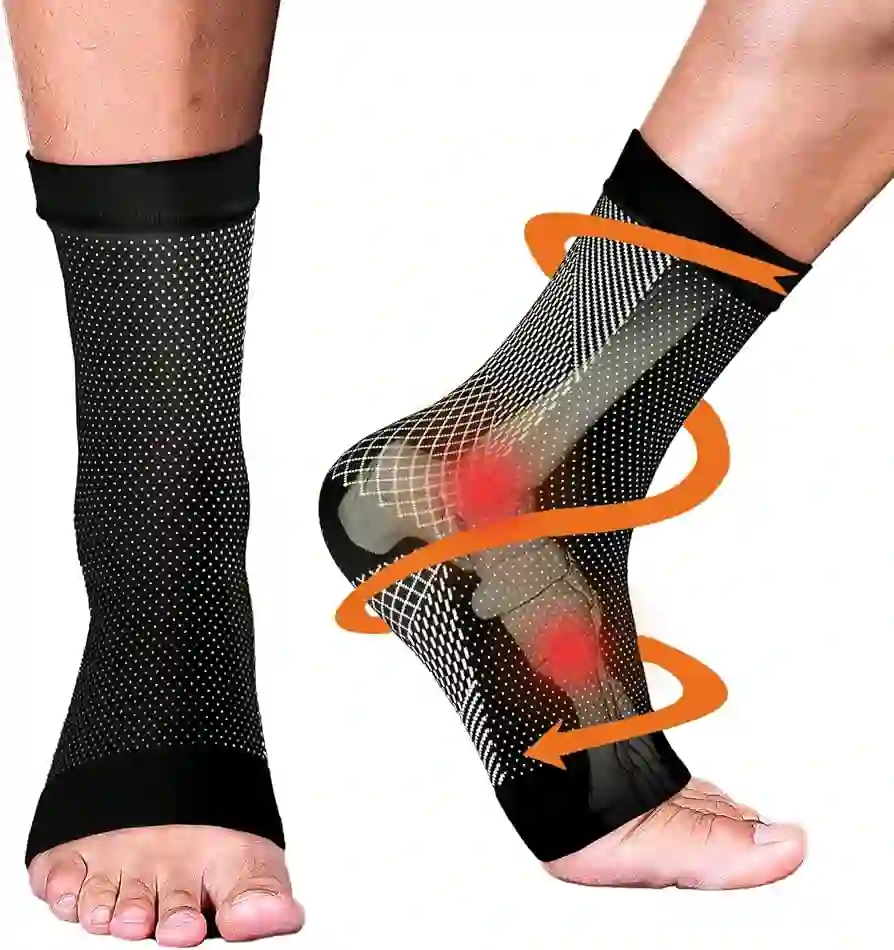
When it comes to managing foot health conditions such as neuropathy and plantar fasciitis, choosing the right type of sock can make all the difference. While neuropathy socks and compression socks both aim to reduce discomfort, they are designed with different goals in mind. This guide breaks down their key differences and explains how each type supports nerve pain, circulation, and plantar fasciitis.
What’s better?
- Neuropathy socks are better for nerve pain and foot sensitivity, often helping individuals with neuropathy or plantar fasciitis who need soft, non-binding support around the foot.
- Compression socks are superior for circulation, swelling reduction, and muscle recovery in the entire lower leg.
Your primary symptom—nerve sensitivity, plantar fasciitis–related arch or heel pain, or swelling—largely determines the best choice.
What Is the Main Difference Between Plantar Fasciitis & Neuropathy Socks and Compression Socks?
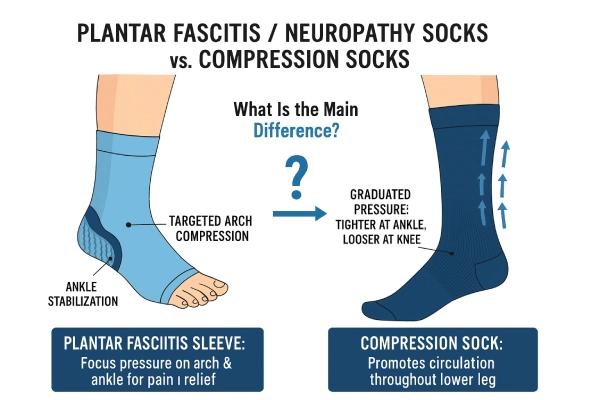
Although they are often mentioned in the same conversation, plantar fasciitis / neuropathy socks and traditional compression socks are not the same thing.
In this guide, plantar fasciitis / neuropathy socks refer to a toeless, sleeve-style design that slides over the mid-foot and ankle and applies targeted pressure under the arch and/or around the ankle. This style is commonly used for plantar fasciitis and light neuropathy support because it offers focused compression exactly where the pain is, without squeezing the calf. Many brands market these as plantar fasciitis neuropathy sleeves.
By contrast, compression socks are full-length socks (usually ankle-high or knee-high) that use graduated compression—tighter at the ankle and gradually looser toward the calf—to improve overall leg circulation and control swelling.
You can think of the main difference like this:
Plantar fasciitis & neuropathy socks
- Design: Short, sleeve-style, usually open toe; focus compression on the arch, heel, and ankle.
- Goal: Directly support the plantar fascia and protect sensitive nerves with mild, localized compression and soft materials.
- Feel: Less restrictive on the calf; easy to wear inside regular shoes for all-day use.
Compression socks (full graduated compression)
- Design: Full sock, often calf-length; use graded pressure from ankle upward to the calf.
- Goal: Boost circulation, reduce swelling (edema), and support muscles and veins in the lower leg; some models add arch zones that help plantar fasciitis as a secondary benefit.
- Feel: Snug along the entire lower leg; best for people who need systemic circulation support, not just arch relief.
Who Should Use Plantar Fasciitis / Neuropathy Socks?
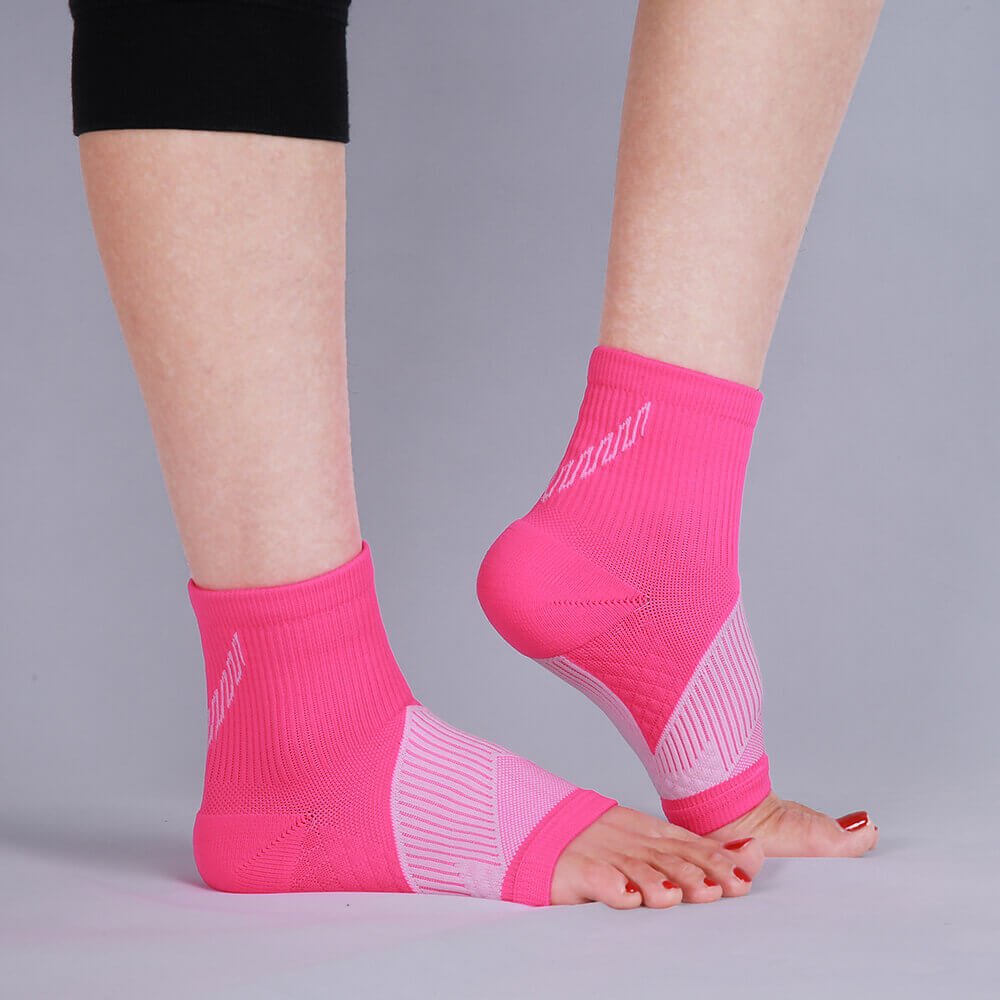
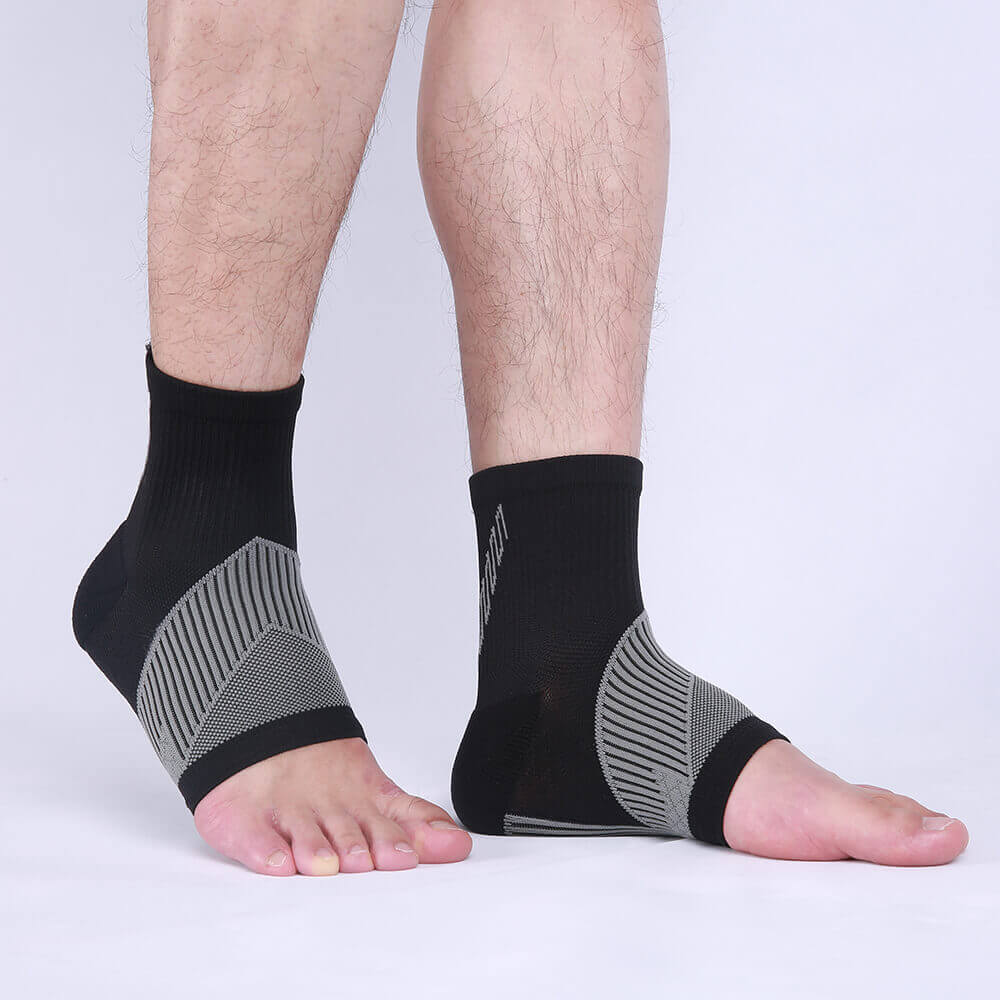
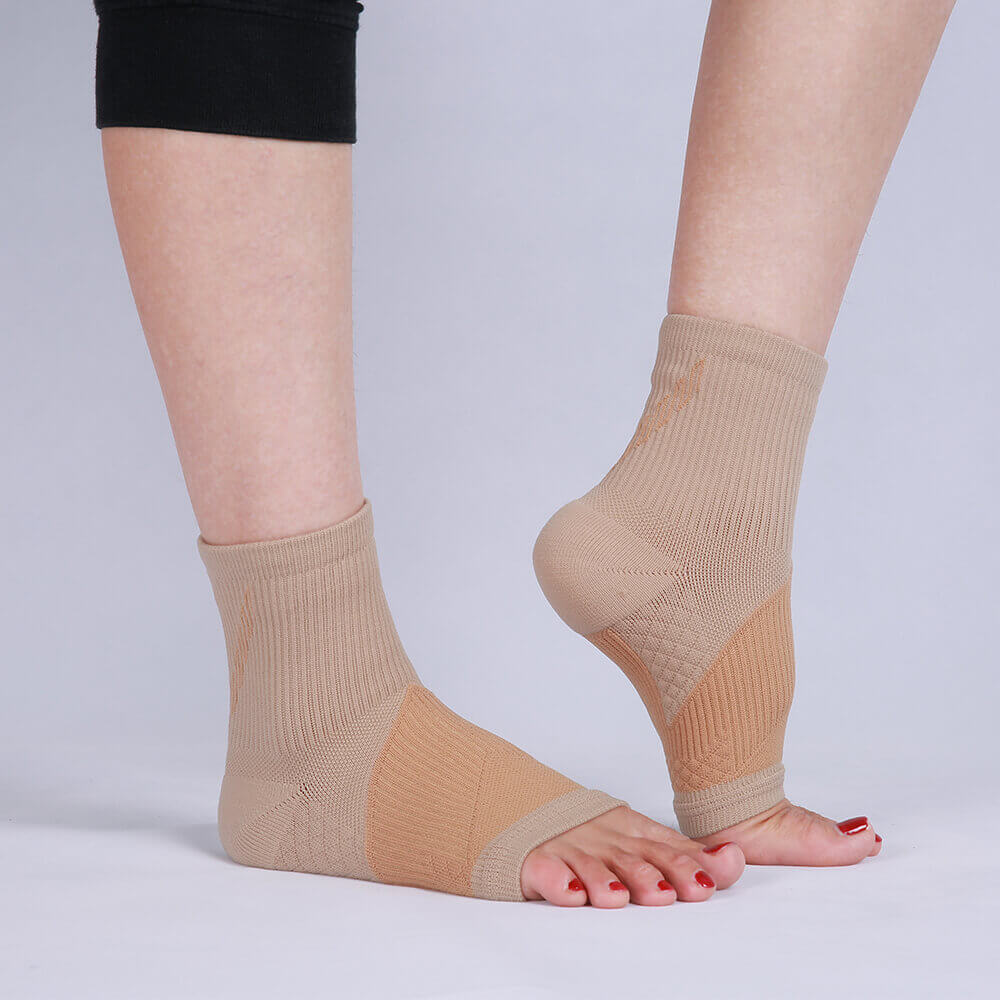
Plantar fasciitis neuropathy socks are ideal if you need focused pain relief under the arch and around the heel or ankle, with minimal calf pressure.
They are especially useful for:
- Plantar fasciitis
- Morning “first-step” heel pain
- Arch pain that worsens with standing or walking
- People who want extra arch support but don’t always want to wear bulky braces
- Neuropathy and nerve sensitivity in the foot
- Mild, sleeve-style compression around the mid-foot and ankle can provide a comforting “hug” to sensitive nerves and reduce friction compared with regular socks.
- Diabetes or peripheral neuropathy with localized pain
- When the main problem is sensitivity or burning in the foot itself (rather than big-time leg swelling), a soft, toeless plantar fasciitis&neuropathy sock can protect the skin and provide gentle compression without squeezing the calf.
- People who cannot tolerate tight calf compression
- If full compression socks leave marks, feel too hot, or are hard to put on, plantar fasciitis neuropathy sleeves are easier to use and more breathable.
Typical benefits consumers are looking for with plantar fasciitis / neuropathy socks:
- Targeted arch and heel support
- Mild, localized compression without calf restriction
- Reduced friction on sensitive or neuropathic skin
- Compatibility with everyday shoes and even under normal socks
Who Should Use Compression Socks?

Compression socks are recommended when the main problems are:
- Poor circulation
- Swelling (edema) in the feet or legs
- Varicose veins or venous insufficiency
- Long periods of standing or sitting (e.g., retail, healthcare, flights, office work)
They are a good choice if you:
- Experience ankle and calf swelling at the end of the day
- Have been advised to wear compression for varicose veins or DVT risk
- Are an athlete, frequent flyer, or stand on hard floors for many hours and want faster recovery and less leg fatigue
For people with both neuropathy and plantar fasciitis, standard high-pressure compression socks may feel too tight or irritating. In that case, plantar fasciitis neuropathy socks or low-to-moderate compression designs meant for sensitive feet are often a safer, more comfortable compromise.
Can Plantar Fasciitis Neuropathy Socks Be Used for Everyday Activities?

Plantar fasciitis neuropathy socks are made to relieve nerve-related discomfort and plantar fasciitis pain, and they are also practical for everyday use. Whether you are walking around the house, working, or running errands, these sleeves provide continuous support and comfort without irritating sensitive skin.
Everyday Use of Plantar Fasciitis / Neuropathy Socks
Plantar fasciitis neuropathy socks are not just for resting or night-time wear. As compression foot sleeves, they are designed for all-day use, offering gentle support around the mid-foot and ankle.
Situations Where Plantar Fasciitis Neuropathy Socks Work Well
- At Work or in the Office
If you sit for long periods or stand on hard floors, plantar fasciitis neuropathy sleeves help support the arch and heel and ease soreness by the end of the day. - Running Errands or Light Walking
While grocery shopping, walking the dog, or moving around town, these sleeves fit easily inside sneakers or casual shoes and provide extra stability and comfort with each step. - At Home and During Relaxation
When you are barefoot or wearing house shoes, plantar fasciitis neuropathy socks continue to support the plantar fascia and reduce burning, tingling, or dull ache so you can relax more comfortably.
Benefits for Everyday Use
- Reduced Pain
Localized compression under the arch and around the ankle helps relieve nerve pain and plantar fasciitis–related heel pain, so you can stay active with less discomfort. - Improved Local Circulation
Gentle pressure around the mid-foot and ankle encourages healthier blood flow in the feet, which can help reduce numbness, tingling, and fatigue. - Long-Term Comfort
Soft, seamless, and often moisture-wicking fabrics minimize friction and hot spots, making plantar fasciitis neuropathy socks suitable for hours of continuous wear, even for people with sensitive or diabetic skin.
Do Plantar Fasciitis/Neuropathy Socks Provide Support for Other Conditions?

Their performanced unique design, and targeted compression makes them useful beyond neuropathy and plantar fasciitis alone.
Other Conditions Treated by Neuropathy Socks
- Foot Fatigue: Neuropathy socks are excellent for those who experience foot fatigue, as they provide gentle compression to stimulate circulation and reduce discomfort.
- General Foot Discomfort: People who suffer from general foot pain, whether due to standing for long periods or wearing ill-fitting shoes, can benefit from the support and pain relief that neuropathy socks provide.
Additional Benefits of Neuropathy Socks
- Pressure Relief: The design helps redistribute pressure across the foot, taking stress off high-load areas such as the heel and ball of the foot.
- Improved Foot Health: By promoting better local circulation and reducing friction, plantar fasciitis neuropathy socks can support overall foot health and may help lower the risk of worsening pain, especially in people with neuropathy or diabetes.
FAQs
What is the main functional difference between neuropathy socks and compression socks?
Compression socks use graduated pressure to improve circulation and reduce swelling in the feet and lower legs. Neuropathy socks focus on comfort, using soft, non-binding materials and light support to protect sensitive nerves. They help reduce irritation but do not provide strong therapeutic compression.
Are plantar fasciitis or neuropathy socks the same as compression socks?
No. Plantar fasciitis or neuropathy socks are typically sleeve-style designs that target the arch, heel, or mid-foot with mild localized compression. Compression socks are calf-length and use graduated pressure to improve blood flow and control swelling throughout the lower leg.
If my main goal is improving circulation, which sock works best?
Compression socks are the best option for circulation. Their graded pressure helps move blood back toward the heart and reduces fluid buildup. Plantar fasciitis or neuropathy socks support the arch and ease nerve discomfort but do not significantly boost systemic circulation.
Do compression socks help with neuropathy pain?
They can. By reducing swelling and improving blood flow, compression socks may ease pressure on irritated nerves and decrease tingling or burning. They are not a direct treatment for neuropathy but can offer symptom relief for people who tolerate compression well.
Are socks alone enough to treat neuropathy or plantar fasciitis?
No. Socks help manage daily symptoms but are not a complete treatment. For lasting relief, they should be paired with stretching, proper footwear, weight management, and medical guidance. Socks reduce irritation and pain but do not cure underlying causes.
Conclusion: Which Sock Is Right?

Choose plantar fasciitis neuropathy socks if your main issues are arch and heel pain or nerve sensitivity; choose compression socks if you need stronger support for swelling and circulation in the lower leg.
For B2B sourcing, Max Hosiery offers both styles with customizable options—visit our product collection or reach out to our team for detailed specifications and quotations.
